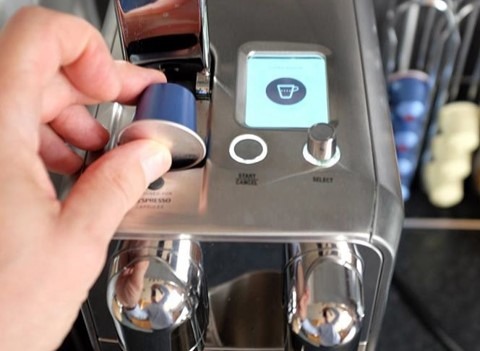Centre for Accessible Environments Associate Consultant Ron Koorm considers the benefits of inclusive design on everyday controls in our lives to ensure everyone can use them.
Controls affect our daily lives.
We need them to operate equipment, taps, control the heating… but many people are frustrated by poor design which means they cannot access the controls.
While there is some guidance on inclusive design within best practice guidance (BS 8300) on building controls – such as where they are located, their visibility, ease of operation, and door controls – there is little about specific controls that we encounter in our daily lives, such as those on a coffee machine.
Manual handling
Most products require physical manipulation of controls and manual handling to grasp, pinch, grip, or push to operate a device. A typical tap, for example, will need to be pushed or twisted, which puts stress on our muscles and joints, and relies on flexibility.
Rotating a knob or dial while having to press a button simultaneously can be a challenge for many. Having to twist your body at the same time puts extra strain on your muscles and spine.
Crosshead taps are not considered to be accessible but are very common and virtually impossible to operate with a closed fist or severe arthritis.
Some thermostatically operated showers now come with an electronic light-emitting diode (LED) display indicating temperature and flow. While that might be a step forward for some, it’s of no use to many people with vision impairment.
Cater to all guests
Office and guest accommodation managers really need to think about all the control devices in rooms and how accessible they are. They need to consider the user journey and how people will interact with controls such as sanitary ware, door keys, temperature controls, hearing loops, tea points, and more.
If you are a hotel or you let guest accommodation, you really should consider how you can cater for all guests (including families). Guidance can be found at The Inclusive Hotels Network, which is hosted on the Centre for Accessible Environments website, provides guidance for such accommodation.
Touch-screens and Proximity controls
Touch-screens may not be inclusive. Some require pinpoint accuracy to select part of a screen menu, and the user can quickly become frustrated. Perhaps with a disability, you can only use a closed fist? If so, then touch-screens are not for you. Touchless controls or voice activation may be better.
We are now seeing some examples of innovation in buildings and homes with the use of touchless controls, partly driven by the emergence of COVID-19.
Technology using voice or physical movement, such as hand movements in front of a sensor to operate controls for the user, offers opportunities to make your service or building more accessible not just in accommodation settings, but in offices and health settings as well.
Touchless, or proximity controls, for example on door entry systems, not only reduce the chance of transmitting infections but also open up the use of equipment wider for some disabled people.
As a result of the pandemic, staff and consumers will expect to see more touchless controls to safeguard their own health and that of others. For businesses, it will provide a competitive advantage as your service or product is open to a wider consumer base.
Inclusive design education
All of the above demonstrates the need – at the outset of designing a control or product – to have not only diversity within the design team, but also an inclusive mindset to design equipment and controls for everyone.
There are a few examples of inclusive design courses such as the Global Disability Innovation Hub’s MSc in Disability, Design and Innovation which has a module on design approaches and technologies. Engineering students should explore how inclusive design can be factored into their designs.
Good practice
Smart buildings of the future will need such engineers and designers to have an inclusive mindset to design accessible equipment and controls that will make designs accessible to everyone.
Engineers and designers should test their designs with diverse users. It is good practice to include focus groups of disabled people and other protected groups under the Equality Act 2010.
Until then, if the controls on equipment or appliances at a hotel or holiday guest accommodation do not work for you, I encourage you to raise this with the manager.

